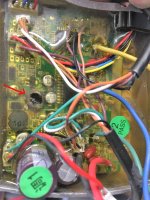Hello everyone.
Does anyone know if it is problematic to set a 48v motor to run at a 36v Akku using the OpenSource firmeware? Does this affect the cadence and/or the efficiency of the motor?
Or does that possibly even have advantages because the 48v moter is a little more current-proof and I can get a little more power than with a 36v motor?
The background is that I was offered a 48v motor but have 36v batteries. I'm thinking about buying the motor.
Thanks for your support
Does anyone know if it is problematic to set a 48v motor to run at a 36v Akku using the OpenSource firmeware? Does this affect the cadence and/or the efficiency of the motor?
Or does that possibly even have advantages because the 48v moter is a little more current-proof and I can get a little more power than with a 36v motor?
The background is that I was offered a 48v motor but have 36v batteries. I'm thinking about buying the motor.
Thanks for your support




